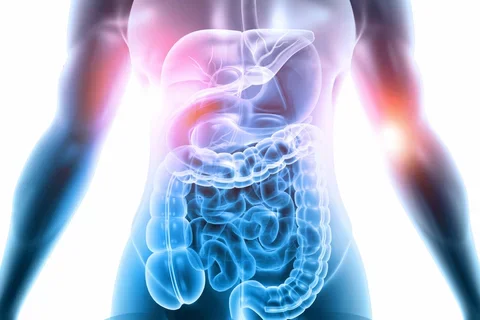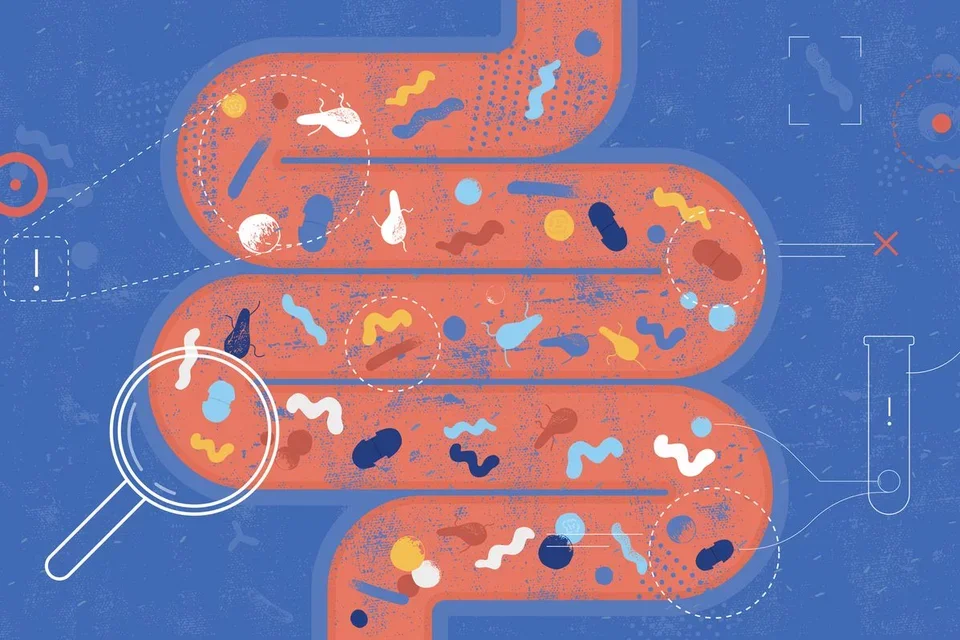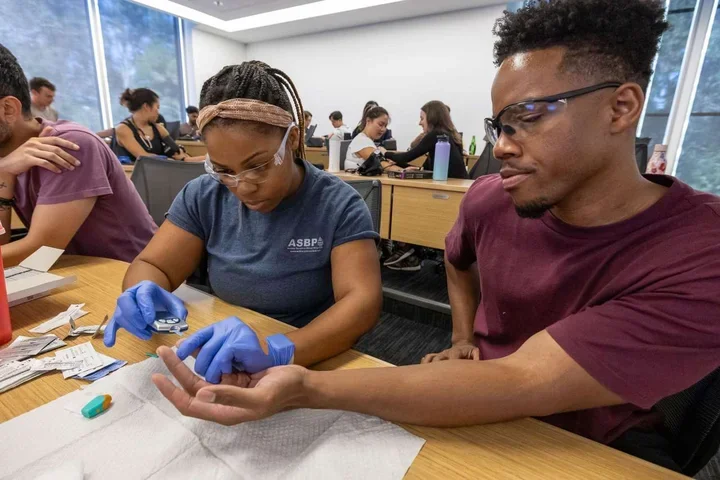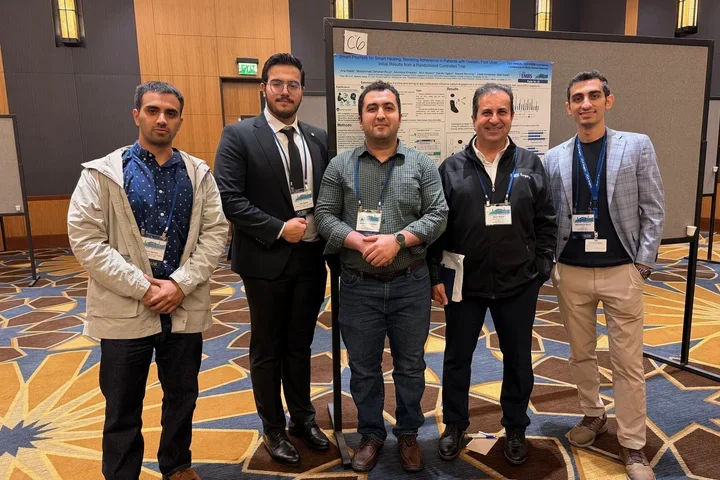Malnutrition Treatment - Feeding Tube vs. IV Nutrition
Medical Expert Interview

Saving Lives With Enteral and Parenteral Nutrition
In this article:
- Feeding Tube Definition
- IV Nutrition Definition
- Enteral vs Parenteral Nutrition
- Total Parenteral Nutrition
- Peripheral Parenteral Nutrition
- Common PPN and TPN Complications
Meet Dr. Michael Garcia
Dr. Garcia didn’t plan to specialize in nutrition support for malnourished adults…
“I had this vision of doing a lot of obesity management, diabetes management, all with a nutrition focus.”

Things changed, however, when he started doing his fellowship with Dr. Zhaoping Li at UCLA. He realized he could make a difference by focusing on malnutrition treatment.
“There is a gap in this type of care. For many years our pediatric gastroenterologists treated many of the adult patients.”
That’s slowly but surely changing, however. Dr. Garcia and his colleagues are currently working to build a program for malnourished adults who require nutrition support. This program—he hopes—can eventually serve as a model for other medical institutions.
He also sees National Nutrition Month as an opportunity to educate everyone about the huge role tube feeding (“enteral nutrition”) or IV nutrition (“parenteral nutrition”) can play in a patient’s life. It’s something most of us don’t think about, he says, until it affects us personally.
“We don’t often think about how important nutrition is … until we find ourselves in a situation where we can’t eat. Then it becomes a quality-of-life issue and we don’t want to end up malnourished.”
And in many cases, the right treatment can be game changing.
“In the past, if someone suffered a catastrophic event and they lost most of their intestines, there weren’t many options,” says Dr. Garcia. “But now, we have these patients who [previously] had no way of getting nutrients receiving life saving treatment.”
(What Is a Nutritionist? Click the link to learn more...)
What Is a Feeding Tube?
A feeding tube provides liquid nutrition and/or medication to individuals who are unable to eat or swallow food normally. Feeding tubes are also called enteral feeding tubes or gastrostomy tubes.
How Does a Feeding Tube Work?
There are different types of feeding tubes, but a less invasive type is a nasogastric tube (NG tube). An NG tube is inserted through the nose and passed down the esophagus to the stomach.
Another type of feeding tube is a gastrostomy tube (G tube). A G tube is inserted directly through the skin and into the stomach through a small incision in the abdomen.
A jejunostomy tube (J tube), on the other hand, is inserted directly into the small intestine through a small incision in the abdomen.
Feeding tubes are used for various medical conditions, such as difficulty swallowing (dysphagia), neurological disorders, gastrointestinal disorders, cancer, and critical illness. Feeding tubes can provide complete nutrition or supplement oral intake. And they can be used for short-term or long-term nutritional support.
How Long Can Someone Live With a Feeding Tube?
The length of time a person can live with a feeding tube depends on the underlying medical conditions that necessitated its use in the first place.
A person who requires a feeding tube due to a temporary medical condition—such as surgery or illness—may only need the tube for a short period (a few days to a few weeks) to avoid malnourishment.
However, a person with a chronic medical condition affecting their ability to eat or swallow may require a feeding tube for a longer period, possibly for the rest of their life.
It's important to note that the use of a feeding tube does not guarantee an extended life. The underlying medical condition and overall health of the person play a significant role in determining their life expectancy.
Feeding tubes require proper care and maintenance to prevent infection and other complications. A healthcare provider should provide instructions on how to properly use and care for the feeding tube. And regular follow-up visits are necessary to ensure the device is working properly and the patient is receiving adequate nutrition.
What Is IV Nutrition?

IV nutrition—also known as intravenous nutrition therapy—is the administration of nutrients directly into the bloodstream through a vein. This type of therapy is used to deliver a high concentration of nutrients that the body needs to function properly.
IV nutrition therapy is often used for people who cannot absorb nutrients through their digestive system due to illness, surgery, or other medical conditions. It can also be used for people who have a deficiency of certain nutrients or need extra nutrients to support their recovery from an illness or injury.
IV nutrition therapy can include a variety of nutrients, such as vitamins, minerals, amino acids, and electrolytes. The exact combination of nutrients used in IV therapy will depend on the patient's specific needs and medical condition. The therapy can be administered in a hospital, medical clinic, or—for certain individuals—home setting. And a trained medical professional typically performs the procedure.
While IV nutrition therapy can be an effective way to deliver nutrients to the body, it is not without risks. Possible side effects may include infection, bleeding, or allergic reactions to the substances being administered.
Enteral vs Parenteral Nutrition: What Is the Difference?
Enteral nutrition and parenteral nutrition are two different methods of providing nutrition to patients who can't eat or digest food properly.
What Is Enteral Nutrition?
Enteral nutrition is a method of providing nutrition through the digestive system. It involves administering a liquid nutrition formula through a feeding tube inserted through the nose or mouth and passed down to the stomach or small intestine. Enteral nutrition can also be administered directly into the stomach or small intestine through a tube that is surgically placed. This method is used when the digestive system is functional but the patient is unable to eat or swallow food.
What Is Parenteral Nutrition?
On the other hand, parenteral nutrition is a method of providing nutrition through the intravenous route. It involves administering a solution that contains a mixture of nutrients directly into the bloodstream through a central or peripheral vein. This method is used when the digestive system is not functional or cannot absorb nutrients properly.

In summary, the main difference between enteral and parenteral nutrition is the route of administration. Enteral nutrition is administered through the digestive system, while parenteral nutrition is administered through the bloodstream.
What Is TPN (Total Parenteral Nutrition)?
Total parenteral nutrition (TPN) is a form of nutrition support provided through the intravenous (IV) route. TPN is used when a person cannot obtain sufficient nutrients through their digestive system, or when their digestive system needs to rest and heal.
TPN is a solution that contains a mixture of nutrients such as carbohydrates, proteins, fats, electrolytes, vitamins, and minerals. The solution is given through a large central vein, typically the subclavian vein or the superior vena cava. In most cases, the solution is given continuously. And the composition of the solution can be tailored to meet the specific nutritional needs of the individual.
TPN is often used in patients who have gastrointestinal disorders, severe malnutrition, or who are unable to eat for an extended period of time. It can also be used in patients with cancer or other chronic illnesses that affect their ability to absorb nutrients. TPN is usually administered in a hospital setting under close medical supervision. This way the patient's response to the therapy can be monitored closely.
What Is PPN (Peripheral Parenteral Nutrition)?
Peripheral parenteral nutrition (PPN) is a form of nutrition support provided through the peripheral veins, typically in the arms. Unlike total parenteral nutrition (TPN)—which is delivered through a central vein—PPN is a less concentrated solution used for short-term nutritional support.
PPN is used when a person cannot eat or digest food properly, but their condition does not require the use of TPN. It is often used for patients who are expected to need nutritional support for less than two weeks. It is not recommended for long-term use due to the risk of complications such as vein irritation and infection.
PPN vs TPN: Overall, PPN is a less invasive form of parenteral nutrition compared to TPN. PPN is typically reserved for short-term use in patients who require some form of nutritional support but are not severely malnourished or unable to tolerate oral or enteral feeding.
Is Home Parenteral Nutrition an Option?
Home parenteral nutrition (HPN) is an option for some patients who require nutritional IV therapy for an extended period. HPN can be administered at home by trained healthcare professionals or by the patient or caregiver themselves, with appropriate training, supervision, and ongoing support.
Patients who receive HPN must be carefully monitored for complications, such as infections or blood clots. These can occur as a result of long-term intravenous therapy. Regular follow-up visits with a healthcare provider are necessary to monitor the patient's health status, assess the need for adjustments to the nutrition formula, and manage any potential complications.
HPN can be an effective option for patients who require long-term intravenous nutrition therapy and are able to manage the treatment at home. However, it is important for the patient to work closely with a healthcare provider to determine if HPN is appropriate for their specific medical needs.
What Are the Most Common PPN and TPN Complications?
While PPN and TPN can be life-saving therapies, they are not without risks. Some of the potential complications associated with PPN and TPN include:
- Infection: The insertion of a catheter into a vein increases the risk of infection. Catheter-related bloodstream infections can be serious and potentially life-threatening.
- Electrolyte imbalances: Parenteral nutrition can cause imbalances in electrolytes, such as sodium, potassium, and calcium. This can lead to a range of complications, including irregular heart rhythms, muscle weakness, and seizures.
- Liver dysfunction: Long-term use of parenteral nutrition can lead to liver dysfunction, including liver disease and liver failure. This is due to the high sugar and fat content of the parenteral nutrition formula, which can overload the liver's capacity to process nutrients.
- Blood sugar abnormalities: Parenteral nutrition can cause blood sugar levels to fluctuate. This can lead to hyperglycemia or hypoglycemia, which can be dangerous for people with diabetes or other conditions that affect blood sugar regulation.
- Metabolic abnormalities: Parenteral nutrition can cause metabolic abnormalities, including metabolic acidosis. This occurs when the body's pH level becomes too acidic. It can also cause metabolic alkalosis, which occurs when the body's pH level becomes too alkaline.
- Blood clots: Parenteral nutrition can increase the risk of blood clots, which can lead to deep vein thrombosis or pulmonary embolism.
It is important to work closely with a healthcare provider to monitor and manage any potential complications associated with PPN and TPN.
Celebrating National Nutrition Month
National Nutrition Month® takes place in March. The Academy of Nutrition and Dietetics created it to educate people about healthy eating and lifestyle choices and to empower them to make positive changes. It’s also a chance to learn more about the lifesaving therapies doctors use when patients face malnutrition due to a medical condition.



